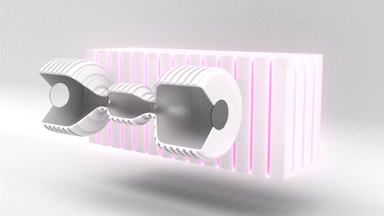Helion Is On Track To Unlock Fusion Energy By 2028
But can they really pull off this impossible feat?

You may not have heard of Helion, but it is one of the most promising players in the race to unlock fusion energy. Their technology takes a brilliantly novel approach to the problems that stump most reactors, which has helped them rapidly become an industry leader and attract massive investment from the likes of Mark Zuckerberg, Sam Altman and Microsoft. Recently, Helion announced that they are on track to build a fusion power plant by 2028. They also stated they had signed a deal with Microsoft to supply them with 50 megawatts of fusion power from this plant by 2028, and if they miss this target, they face financial penalties. But Helion has yet to yield more energy from fusion experiments than they put in! So, can they hit this monumental target?
Let’s start at the beginning. What is fusion? Why is it considered the ultimate clean energy? And why haven’t we unlocked it yet?
Nuclear fusion is the process that powers stars. The temperatures and pressures in their core are so high that hydrogen atoms have enough kinetic energy to overcome the repulsive force that keeps atoms separate. So, when two hydrogen atoms collide in this super-hot super-dense plasma, they fuse to form helium. But this helium is slightly lighter than the two atoms of hydrogen it came from. This spare mass is transformed into energy and released.
Now, Einstein’s famous E=MC² states that a little bit of mass is equal to a vast amount of energy. This means that if you fuse a tiny amount of hydrogen, a truly immense amount of energy is released! To give you a sense of scale here, if you fused 17 tonnes of hydrogen, it would produce enough energy to power the entire US for a year! That equates to only 0.05 grams of hydrogen per US citizen for the whole year.
That is why fusion is considered the ultimate clean energy. It produces no carbon dioxide emissions, no nuclear waste, is incredibly fuel efficient and incredibly compact while also delivering pow on-demand.
The problem? Well, it takes an unholy amount of energy for us to replicate the conditions of the core of a star in our reactors. So much so that we use more energy to start fusion than we get out of it. There have been some incredible advances in this area recently though. The National Ignition Facility was able to create a burning plasma, in which heat from the fusion reaction kick-started more fusion, and was able to produce 54% more energy from a reaction than they put into it! But this isn’t enough to unlock fusion energy.
You see, the National Ignition Facility uses a fusion reactor design known as inertial confinement. This is where a laser is used to rapidly heat a hydrogen-rich fuel pellet, vaporising it and creating a superheated hydrogen plasma, and the pressure and heat from this vaporisation cause fusion. But it takes days to reload a fuel pellet, and the lasers the National Ignition Facility uses are so high-powered that they can only do a handful of high-power shots a year. Otherwise, they risk breaking the laser. This puts a very low hard limit on how much energy a reactor like theirs can produce, rendering it practically useless.
But what’s more pressing is the fact that their laser is only 0.05% efficient, and the energy emitted by the fusion reaction is mostly thermal (driven by neutron radiation). Thermal energy capture systems like steam generators are at most 60% efficient. So even though they can make a net gain from a fusion reaction, their reactor’s inefficiency would still lead to an overall energy loss, rendering it useless as an energy source.
Now, there is a reactor design that promises to be more energy efficient and be able to run fusion reactions continuously. These are known as magnetic confinement reactors. They use incredibly strong magnetic fields to heat and compress hydrogen inside a doughnut-shaped reactor to start fusion. However, while the machine promises to be more efficient, the fusion reactions they create are much less efficient, leading to massive energy losses.
What we need is to combine these two designs and get the best of both worlds. Well, this is precisely what Helion has done and a little more.
Their novel reactor uses a method known as magnetised target confinement. It is basically two magnetic confinement reactors pointed at each other. First, hydrogen plasma is put into both ends of the reactor, where magnets heat and compress the plasma. But then, they fire their plasmas at high speeds at each other, with the beams intercepting in the middle of the reactor. At the point of interception, the pressures, and temperatures skyrocket, causing fusion.



